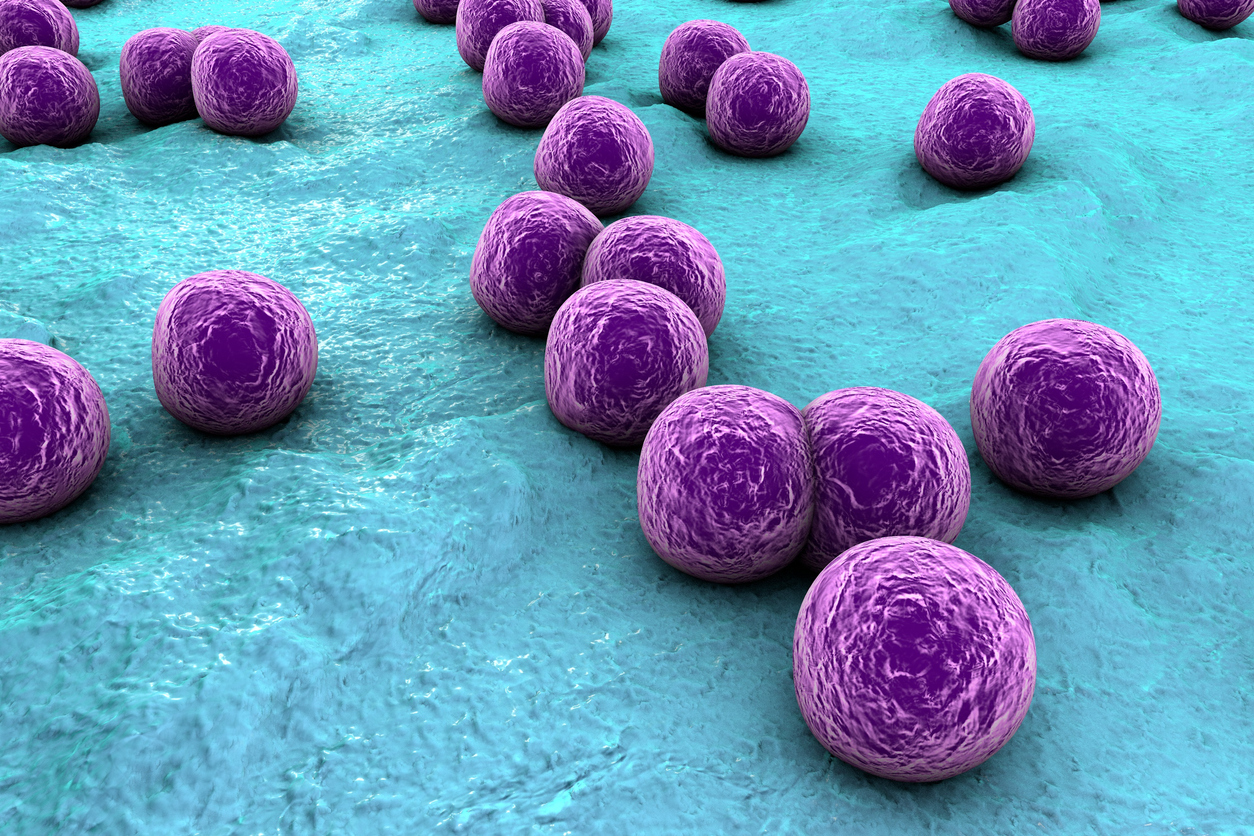What are Staph Infections?
What are Staph Infections?
Staph infections are caused by staphylococcus bacteria. Staph infections can fall under two types: methicillin-susceptible staph (MSSA) or methicillin-resistant staph (MRSA). A test can determine which type someone has. The results will then allow the physician to decide which medications and treatments to prescribe for patients. For example, MSSA can be treated with methicillin while MRSA must be treated with other medications.
Staph infections can affect even the healthiest of individuals but usually result in little to no issues. About 25 percent of the population already carries staph in areas like the mouth and nose, but don’t experience any negative health issues. The most common way a staph infection can develop is when a small cut gets infected.
These infections can be deadly if not caught and treated early. Once a staph infection reaches a person’s heart, joints, lungs, bones, or bloodstream, it can lead to sepsis or septic shock. Over 119,000 Americans were diagnosed with a bloodstream-related staph infection in 2017, and of those diagnosed, nearly 20,000 people died from the condition. It is important to understand the signs, symptoms, causes, and treatments of staph infections to help prevent the spread of infection. Needless to say, staph infections are a matter to take very seriously. By understanding how staph infections develop and recognizing its symptoms, we can help prevent the spread of bacterial infections in ourselves and others.
Staph Infection Symptoms and Signs
Staph infections present themselves in different ways, where some signs are more apparent than others. Although not all the following could be caused by a staph infection, some of the more common symptoms include:
- Skin Infections (like boils or impetigo)
- Food Poisoning
- Septicemia (blood poisoning)
- Toxic Shock Syndrome
- Septic Arthritis
Staph infections can be caught early, especially if you consult your doctor if you or a loved one is experiencing:
- Pus-filled Blisters
- Fever
- Red/Irritated Skin
- Passing of Skin Infections among Family Members
Staph Infections Diagnosis

The diagnosis of staph infections can vary, but most doctors will first perform a physical exam where they examine any skin issues. They may also speak with you about any internal symptoms you’re experiencing, like an ongoing or worsening fever.
If your doctor has noticed certain skin lesions or boils, they may take a sample from the area to test. The sample is directly extracted from the lesions or boils themselves or from your nasal secretions. The lab tests the culture to determine which antibiotics would help fight the infection – results are available within a couple of days.
Staph Infections Causes
Staph infections are caused by a number of reasons. Many people already carry the staph bacteria but do not experience any symptoms. However, the same people carrying the bacteria within their bodies can pass it along to others who are susceptible to developing an infection. Staph bacteria are able to survive on inanimate objects (such as pillowcases, bath towels, blankets, etc.) making the spread of the bacteria common. Unlike most bacteria types, staph bacteria can survive under extreme conditions like:
- Stomach Acid
- Extreme Temperatures
- High Salt Levels
- Drying
Risk Factors for Staph Infections
Certain risk factors can increase the likelihood of developing a staph infection, including underlying health conditions as well as external factors.
Underlying Health Conditions
- HIV/AIDS
- Cancer
- Skin Damage
- Respiratory Illnesses
Recent or Current Hospitalization where You’ve Experienced…
- Burns
- Weakened Immune System
- Surgical Wounds
Invasive Devices
- Feeding, Breathing, and Dialysis Tubes
- Catheters
Other Risk Factors
- Unsanitary Food Preparation
- Contact Sports
Staph Infection Treatment
Staph infections can be treated in several different ways depending on the severity of the infection and the area affected. The most common treatment method is taking antibiotics. Depending on your sample’s results from the lab test, your doctor will decide which antibiotic is the most effective for your case. The antibiotics most commonly used to treat staph infections are sulfa drugs, nafcillin, vancomycin, or cephalosporins. You may have heard of vancomycin, as it is used most often since many strains of staph bacteria have grown resistant to other medicine. Most antibiotics, including vancomycin, are given through an IV, but some are also given orally. Regardless of the method, it’s crucial to take your medicine as prescribed and finish it entirely in order to help treat the staph infection.
Wound drainage is another method to help heal staph infections. If you have a wound on your body that comes back positive for staph bacteria, your doctor may make an incision into the affected abscess and drain any fluid. If an invasive device or prosthetic is the cause of a staph infection, your doctor will remove it as soon as possible; this may involve surgery.
Prevention
To help prevent the spread of staph infections you can wash your hands regularly, avoid sharing personal items, change tampons frequently, keep wounds bandaged, follow food safety precautions, and wash bedding and clothing in hot water to kill bacteria.
If you do contract a staph infection or experience the telltale symptoms, don’t delay visiting your physician and receiving treatment. With proper care and attention, most people make a full recovery and do not need ongoing treatment.

